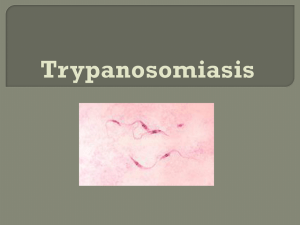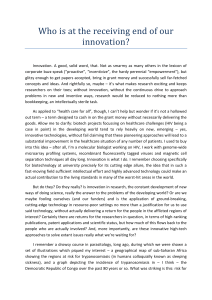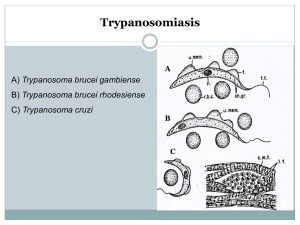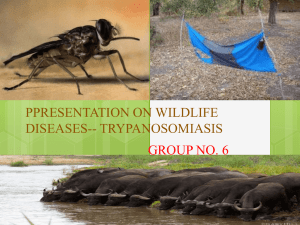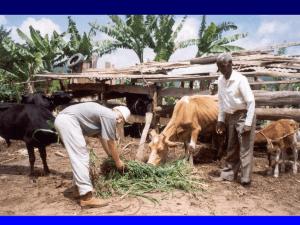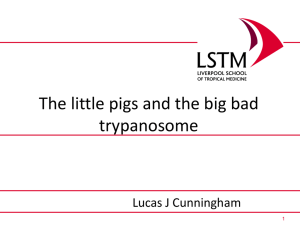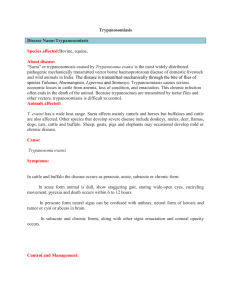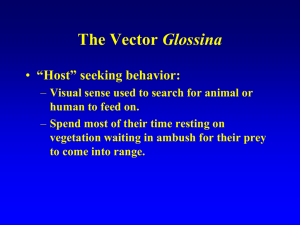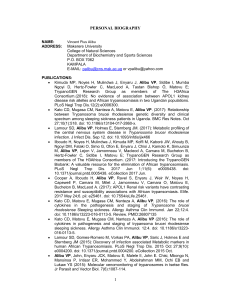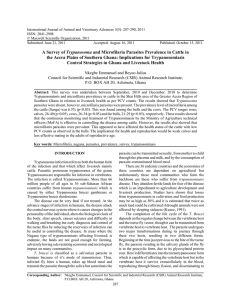Haemoflagellates 2. Trypanosomiasis … (various trypanosome species)
advertisement
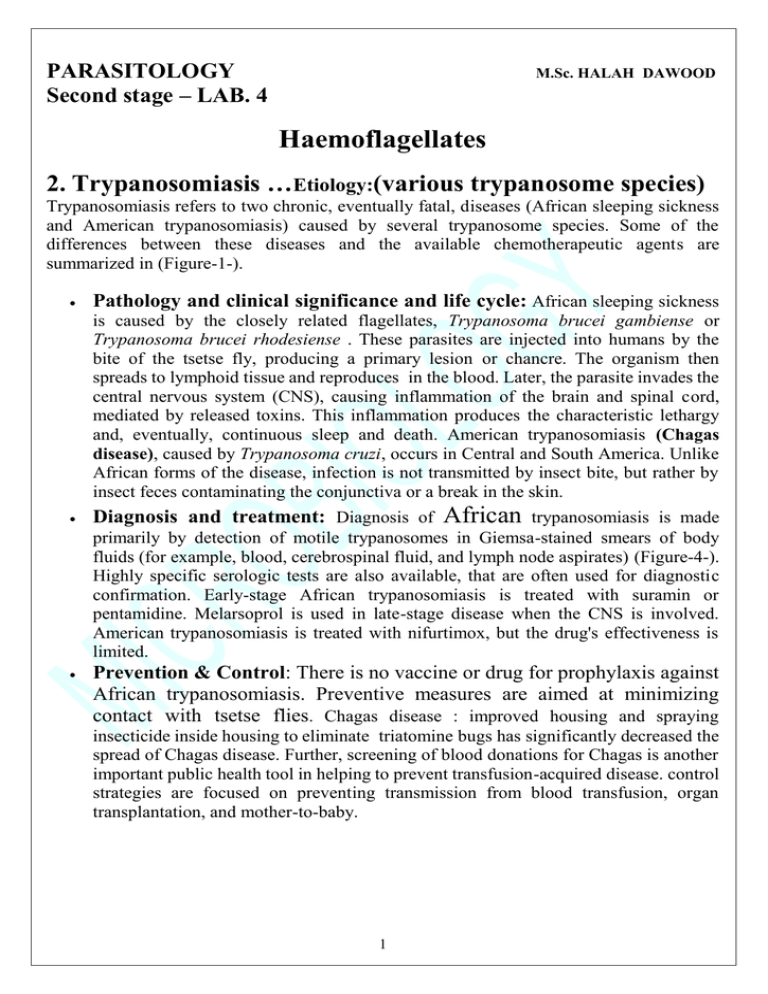
PARASITOLOGY Second stage – LAB. 4 M.Sc. HALAH DAWOOD Haemoflagellates 2. Trypanosomiasis …Etiology:(various trypanosome species) Trypanosomiasis refers to two chronic, eventually fatal, diseases (African sleeping sickness and American trypanosomiasis) caused by several trypanosome species. Some of the differences between these diseases and the available chemotherapeutic agents are summarized in (Figure-1-). Pathology and clinical significance and life cycle: African sleeping sickness is caused by the closely related flagellates, Trypanosoma brucei gambiense or Trypanosoma brucei rhodesiense . These parasites are injected into humans by the bite of the tsetse fly, producing a primary lesion or chancre. The organism then spreads to lymphoid tissue and reproduces in the blood. Later, the parasite invades the central nervous system (CNS), causing inflammation of the brain and spinal cord, mediated by released toxins. This inflammation produces the characteristic lethargy and, eventually, continuous sleep and death. American trypanosomiasis (Chagas disease), caused by Trypanosoma cruzi, occurs in Central and South America. Unlike African forms of the disease, infection is not transmitted by insect bite, but rather by insect feces contaminating the conjunctiva or a break in the skin. African Diagnosis and treatment: Diagnosis of Prevention & Control: There is no vaccine or drug for prophylaxis against African trypanosomiasis. Preventive measures are aimed at minimizing contact with tsetse flies. Chagas disease : improved housing and spraying trypanosomiasis is made primarily by detection of motile trypanosomes in Giemsa-stained smears of body fluids (for example, blood, cerebrospinal fluid, and lymph node aspirates) (Figure-4-). Highly specific serologic tests are also available, that are often used for diagnostic confirmation. Early-stage African trypanosomiasis is treated with suramin or pentamidine. Melarsoprol is used in late-stage disease when the CNS is involved. American trypanosomiasis is treated with nifurtimox, but the drug's effectiveness is limited. insecticide inside housing to eliminate triatomine bugs has significantly decreased the spread of Chagas disease. Further, screening of blood donations for Chagas is another important public health tool in helping to prevent transfusion-acquired disease. control strategies are focused on preventing transmission from blood transfusion, organ transplantation, and mother-to-baby. 1 2

